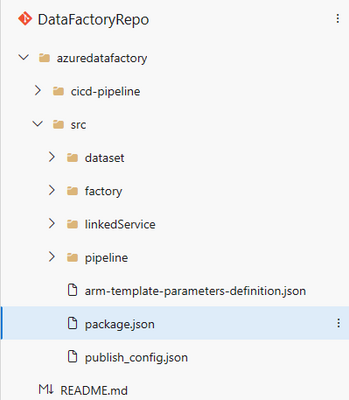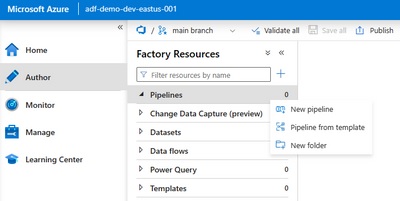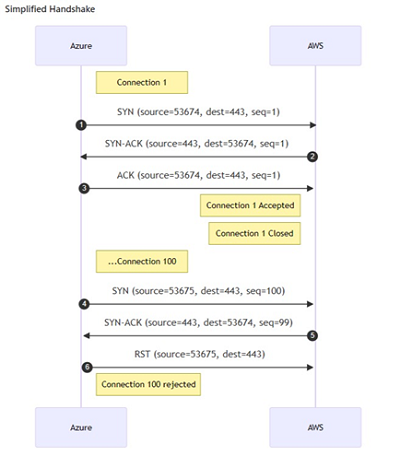Developer Support
Advocacy and Innovation
Latest posts

Programmatically Create SAS tokens in .NET
Andrew Redman explores how to programmatically create SAS tokens using .NET. Introduction In today's digital landscape, data security and controlled access are critical concerns for businesses. Azure Blob Storage is a popular cloud storage solution, allowing you to store and manage unstructured data. To safeguard your data while granting controlled access to authorized users, one effective approach is to generate Shared Access Signature (SAS) tokens programmatically in .NET. In this blog post, we'll explore how to create SAS tokens in .NET, to enhance the security of your Azure Blob Storage. ...

Part 3 – Unlock the Power of Azure Data Factory: A Guide to Boosting Your Data Ingestion Process
John Folberth and Joe Fitzgerald share sample guidance for developing and deploying an Azure Data Factory into multiple environments. Introduction To see a complete introduction to this blog series, including links to all the other parts, please follow the link below: Part 1 - Unlock the Power of Azure Data Factory: A Guide to Boosting Your Data Ingestion Process Part 3 of the blog series will focus on: Access to all files is in GitHub. The YAML Pipeline Structure To create the YAML pipeline for publishing data factory artifacts and then deploying those art...

Azure DevOps Pipelines: Practices for Scaling Templates
John Folberth explores what is considered "good practices" when looking to leverage one repository consisting of YAML templates in this blog series. Introduction This article is part of a larger series on Azure DevOps Pipelines regarding leveraging YAML templating. As part of this series, I have had numerous requests or questions around what is considered "good practices" when looking to leverage one repository consisting of YAML templates. Objective The objective on what we are trying to achieve is create a structure by which we can create a task, job, stage, or variable template once and let...

Part 2 – Unlock the Power of Azure Data Factory: A Guide to Boosting Your Data Ingestion Process
John Folberth and Joe Fitzgerald share sample guidance for developing and deploying an Azure Data Factory into multiple environments. Introduction To see a complete introduction to this blog series, including links to all the other parts, please follow the link below: Part 1 - Unlock the Power of Azure Data Factory: A Guide to Boosting Your Data Ingestion Process Part 2 of the blog series will focus on: Configure Azure Data Factory Source Control After you have the Azure resources created Launch the Azure Data Factory Studio for the development instance, adf-demo-dev-eastus-001...

Load testing your applications using Azure Load Testing, JMeter and GitHub Actions
Dominique St-Amand shares an introduction on JMeter concepts and goes on to create a basic test plan to load test a sample application and run it through a GitHub Action workflow. I’ve been working with more customers that are starting to take testing (unit, integration, end to end and load testing) more seriously. You may ask, “Dom, really? I thought testing was trivial”. Unfortunately not. As we’re entering an era where businesses are producing software like never before, relatively speaking, these businesses are not software companies. They are seeking to prioritize the speedy creation of business value...

Part 1 – Unlock the Power of Azure Data Factory: A Guide to Boosting Your Data Ingestion Process
John Folberth and Joe Fitzgerald share sample guidance for developing and deploying an Azure Data Factory into multiple environments. Introduction In the fast-paced world of cloud architecture, securely collecting, ingesting, and preparing data for health care industry solutions has become an essential requirement. And that's where Azure Data Factory (ADF) comes in. As an Extract, Transform, and Load (ETL) cloud service, ADF empowers you to scale-out serverless data integration and data transformation with ease. Imagine being able to effortlessly create data-driven workflows that orchestrate data movem...

The Art of HTTP Connection Pooling: How to Optimize Your Connections for Peak Performance
Ramakrishna Thanniru, Engineering, Optum / United Health Group Pete Tian, Sr Cloud Solution Architect, Microsoft Migrating an on-prem system to the public cloud can be a daunting task. While many companies have successfully made the transition, some have struggled with unexpected issues. One common problem is the sudden decrease in transaction speed, which can lead to system crashes and frustrating downtime. The Ops team may find themselves scratching their heads when faced with messages such as "timeout exceptions" or "HTTP 504 Gateway Timeout" in the logs, unsure of how to address these issues. As ...

Hosting Option for OpenEMR in Azure
Cloud Solution Architect, Monu Bambroo, spotlights OpenEMR and various ways to host the service in Azure. OpenEMR is the most popular open source electronic health records and medical practice management solution. OpenEMR is designed to be used by healthcare providers and organizations of all sizes, from small clinics to large hospitals. It is a web-based application that can be accessed from any computer with an internet connection, making it easy for providers to access patient records from anywhere. Open EMR software is also fully customizable, allowing providers to tailor it to their specific needs and...

Azure DevOps Pipelines: Leveraging Stages with YAML Objects
John Folberth continues his series on Azure DevOps Pipelines, by Leveraging Stages with YAML Objects. Introduction By now we’ve covered the basics on tasks, jobs, stages, environments, variables and templates for jobs and tasks. It is now time to move towards stage templates. Additionally, to assist with templating we will cover one way to leverage YAML objects which is a key tool when templating up and keeping your pipelines DRY (Don’t Repeat Yourself). To follow along I am leveraging non-ADO code in from Azure IaC Flavors and YAML templates from TheYAMLPipelineOne Stages Recapping from a previous...
